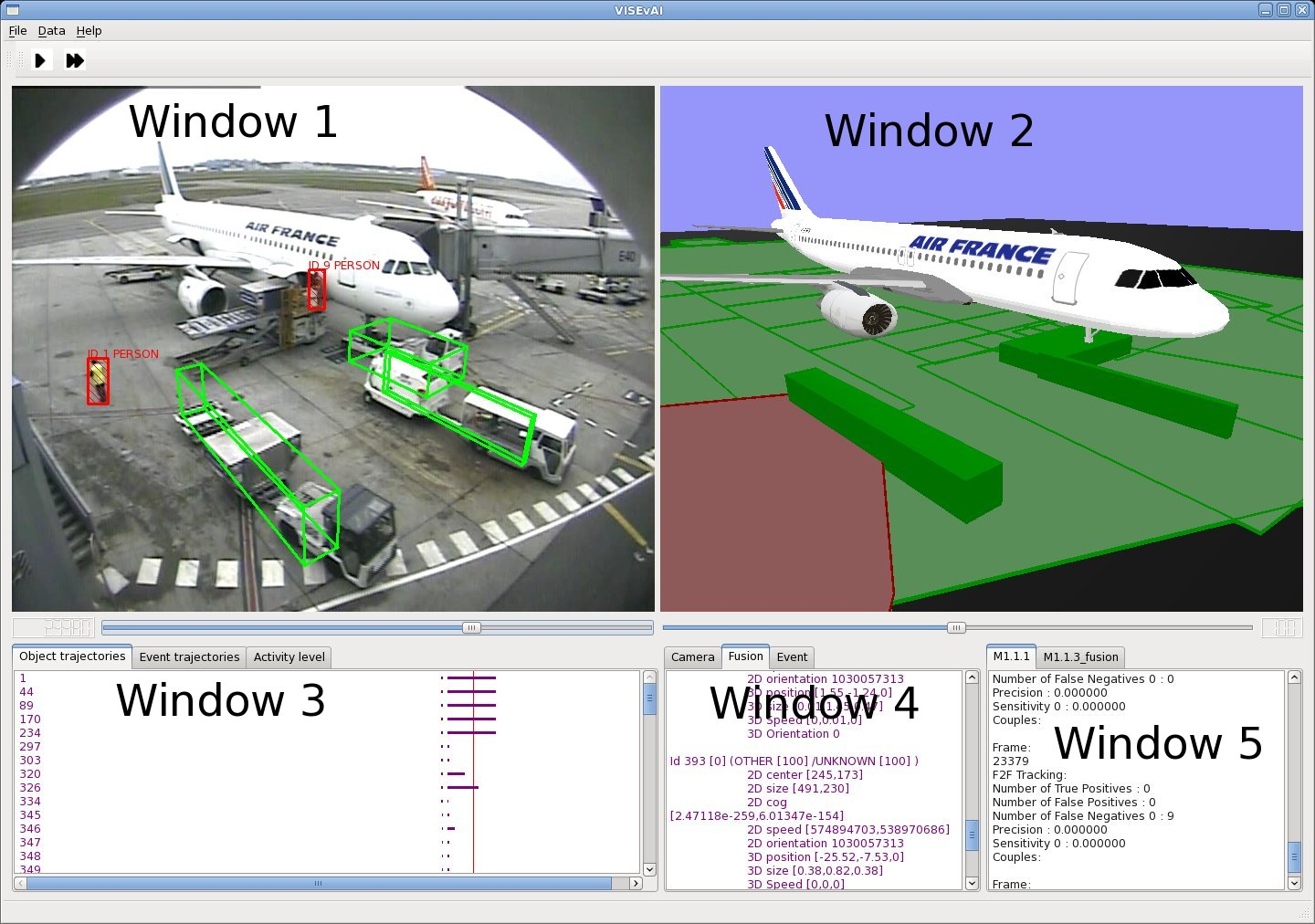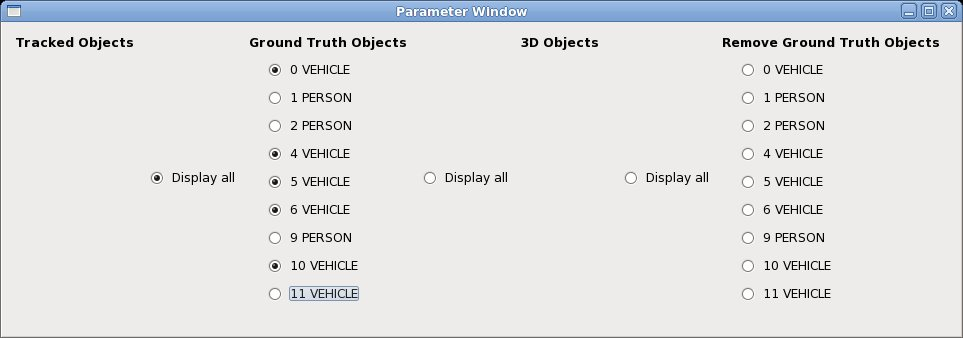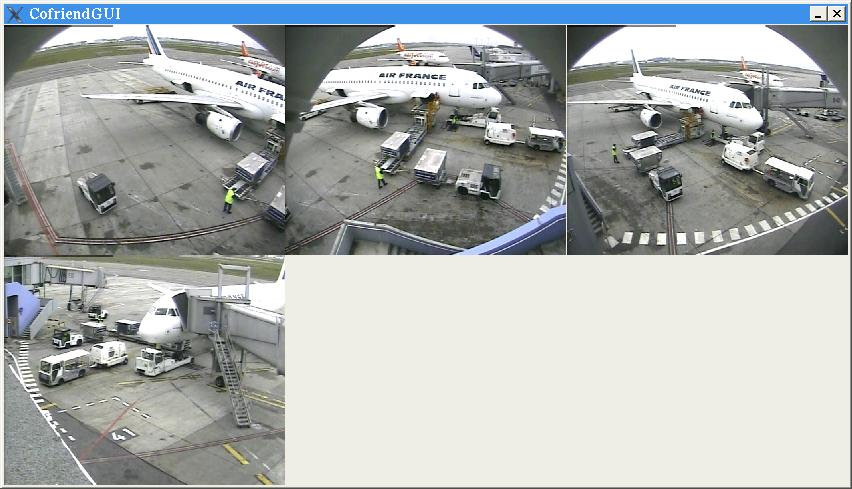Section: Software
ViSEval
ViSEval is a software dedicated to the evaluation and visualization of video processing algorithm outputs. The evaluation of video processing algorithm results is an important step in video analysis research. In video processing, we identify 4 different tasks to evaluate: detection of physical objects of interest, classification of physical objects of interest, tracking of physical objects of interest and event recognition.
The proposed evaluation tool (ViSEvAl, visualization and evaluation) respects three important properties:
-
To be able to visualize the algorithm results.
-
To be able to visualize the metrics and evaluation results.
-
For users to easily add new metrics.
The ViSEvAl tool is composed of two parts: a GUI to visualize results of the video processing algorithms and metrics results, and an evaluation program to evaluate automatically algorithm outputs on large amount of data. An XML format is defined for the different input files (detected objects from one or several cameras, ground-truth and events). XSD files and associated classes are used to check, read and write automatically the different XML files. The design of the software is based on a system of interfaces-plugins. This architecture allows the user to develop specific treatments according to her/his application (e.g. metrics). There are 6 interfaces:
-
The video interface defines the way to load the images in the interface. For instance the user can develop her/his plugin based on her/his own video format. The tool is delivered with a plugin to load JPEG image, and ASF video.
-
The object filter selects which objects (e.g. objects far from the camera) are processed to compute the evaluation. The tool is delivered with 3 filters.
-
The distance interface defines how the detected objects match the ground-truth objects based on their bounding box. The tool is delivered with 3 plugins comparing 2D bounding boxes and 3 plugins comparing 3D bounding boxes.
-
The frame metric interface implements metrics (e.g. detection metric, classification metric, ...) which can be computed on each frame of the video. The tool is delivered with 5 frame metrics.
-
The temporal metric interface implements metrics (tracking metric,...) which are computed on the whole video sequence. The tool is delivered with 3 temporal metrics.
-
The event metric interface implements metrics to evaluate the recognized events. The tool is delivered with 4 metrics.
The GUI is composed of different parts (see Figure 3 ):
-
Window 1: the video part displays the current image and information about the detected and ground-truth objects (bounding-boxes, identifier, type,...).
-
Window 2: the 3D virtual scene displays a 3D view of the scene (3D avatars for the detected and ground-truth objects, context, ...).
-
Window 3: the temporal information about the detected and ground truth objects, and about the recognized and ground-truth events.
-
Window 4: the description part gives detailed information about the objects and the events,
-
Window 5: the metric part shows the evaluation results of the frame metrics.
-
The object window enables the user to choose the object to be displayed (see Figure 4 ).
-
The multi-view window displays the different points of view of the scene (see Figure 5 ).
The evaluation program saves, in a text file, the evaluation results of all the metrics for each frame (whenever it is appropriate), for all video sequences and for each object of the ground truth.
The ViSEvAl software was tested and validated into the framework of the Cofriend project through its partners (Akka,...). The tool is also used by IMRA, Nice hospital, Institute for Infocomm Research (Singapore),... The software version 1.0 was delivered to APP (French Program Protection Agency) on August 2010. ViSEvAl is under GNU Affero General Public License AGPL (http://www.gnu.org/licenses/ ) since July 2011. The tool is available on the web page : http://www-sop.inria.fr/teams/pulsar/EvaluationTool/ViSEvAl_Description.html





